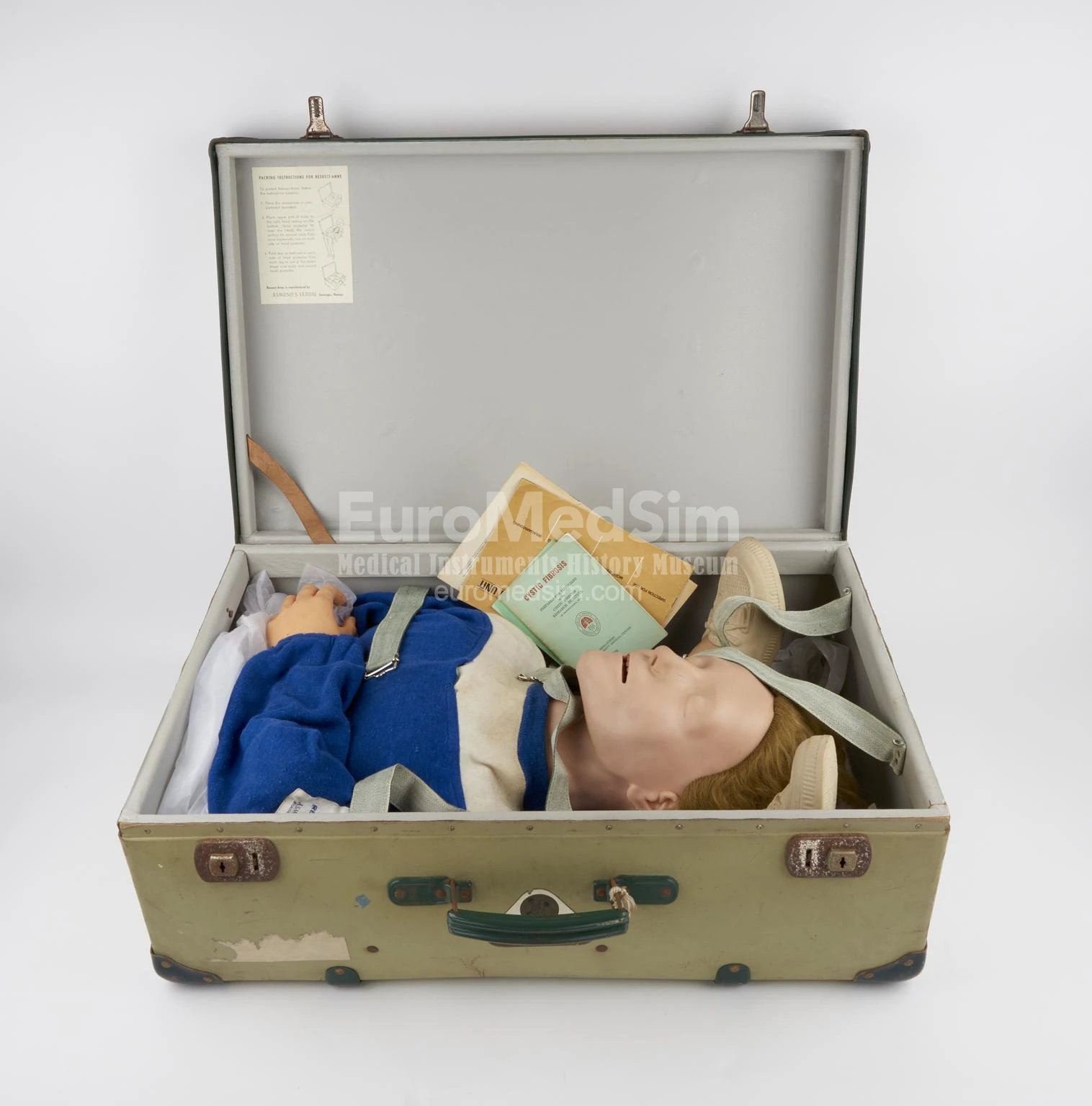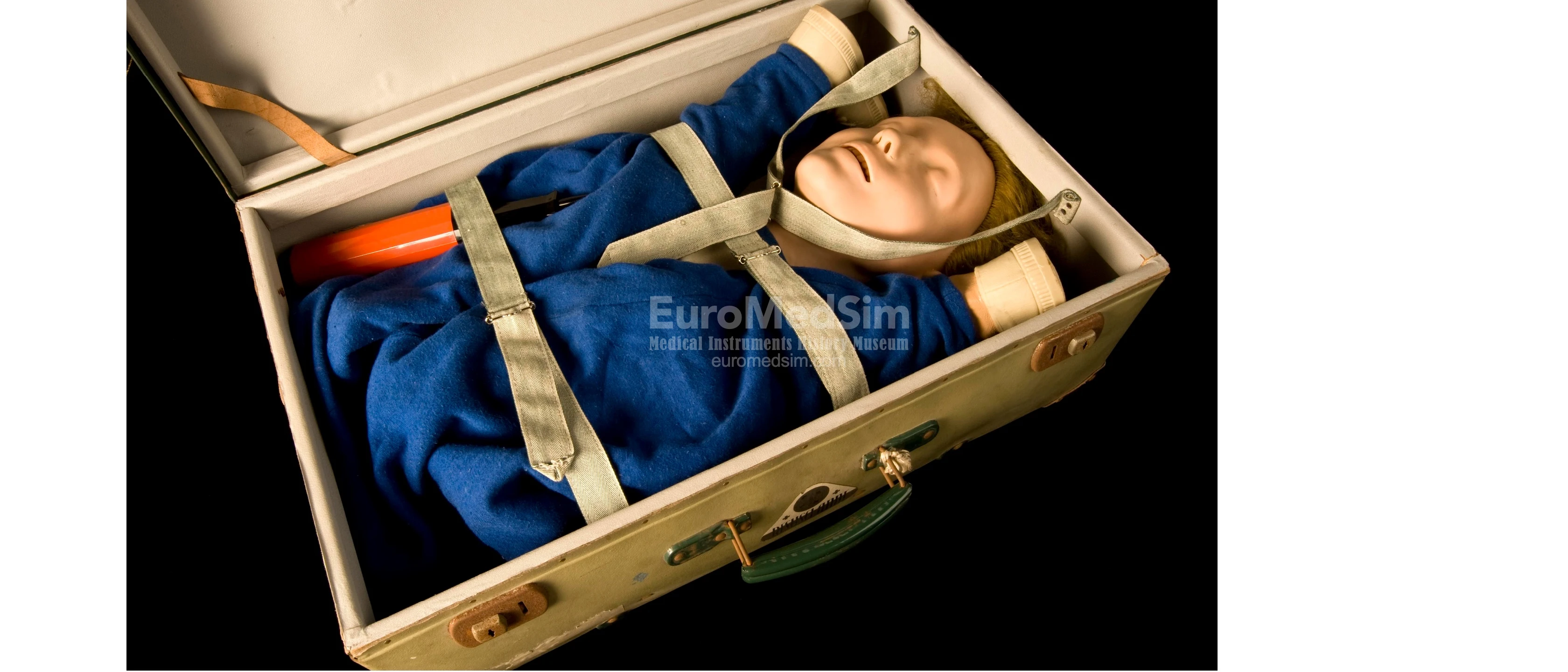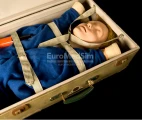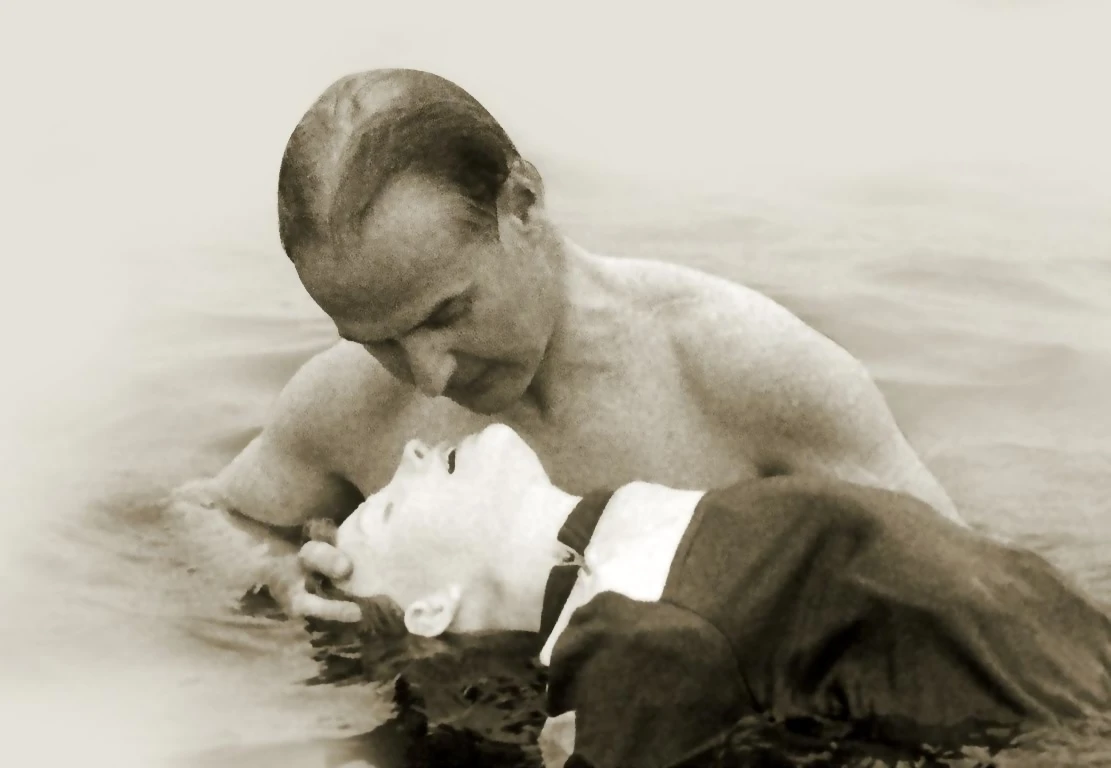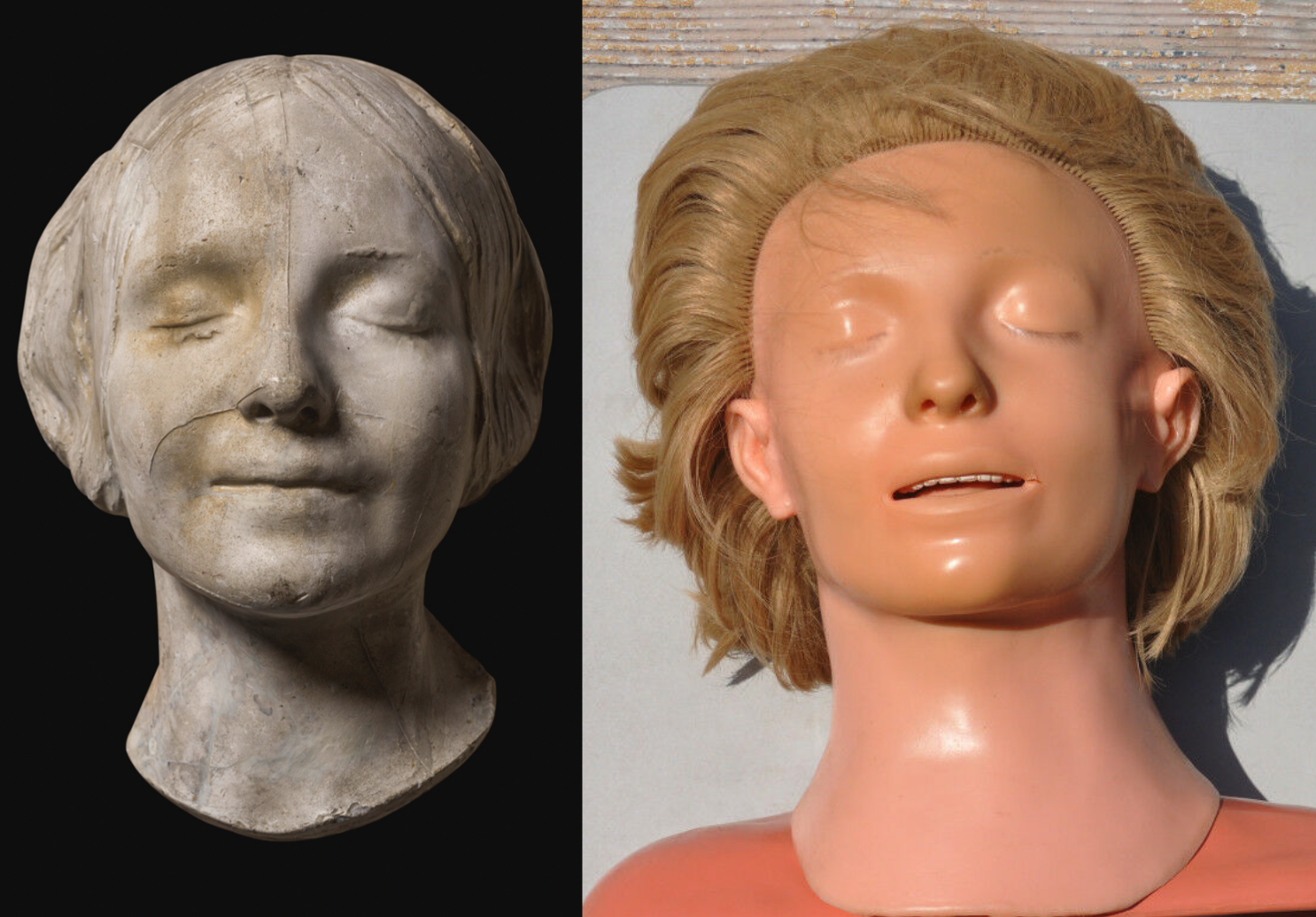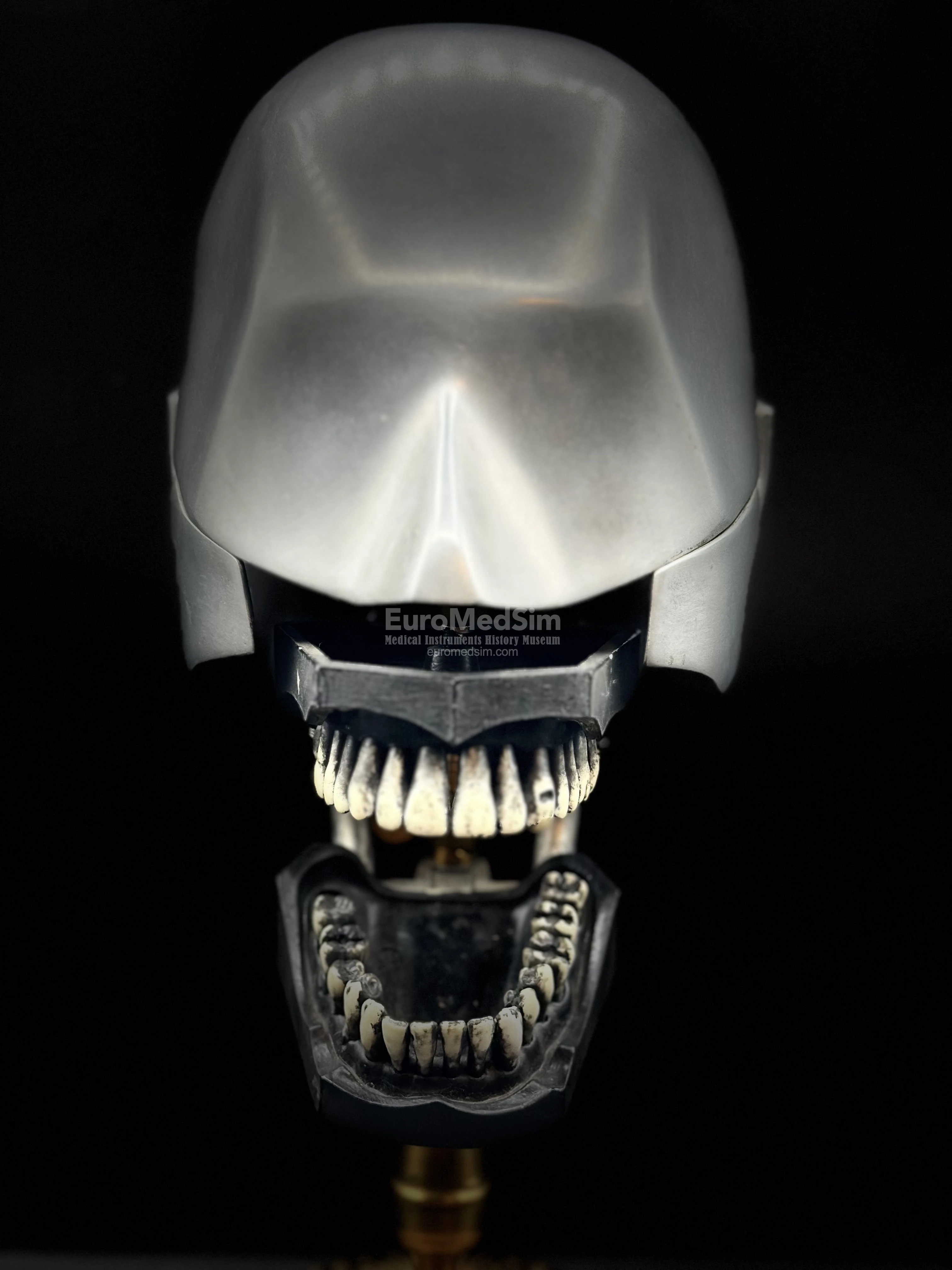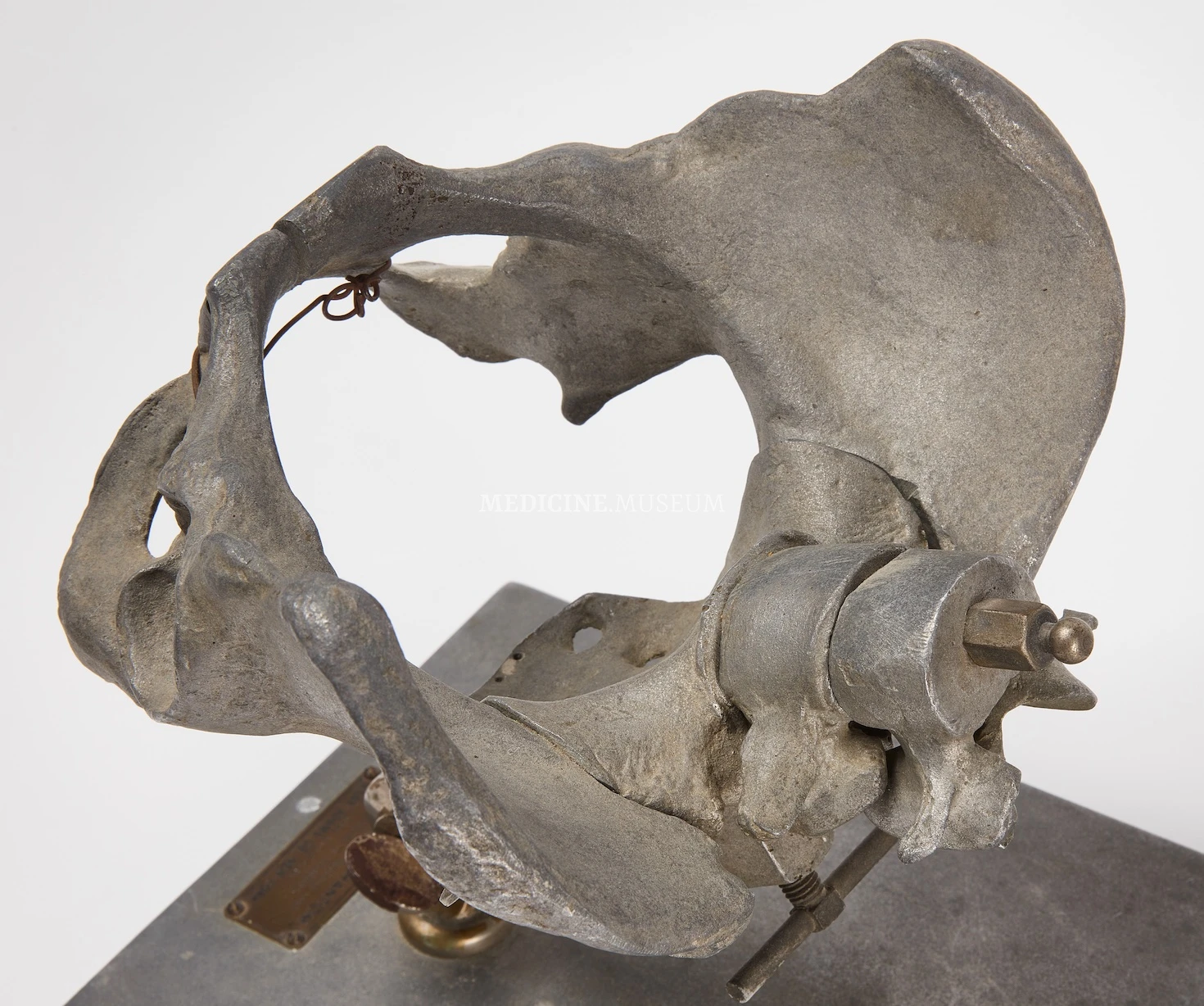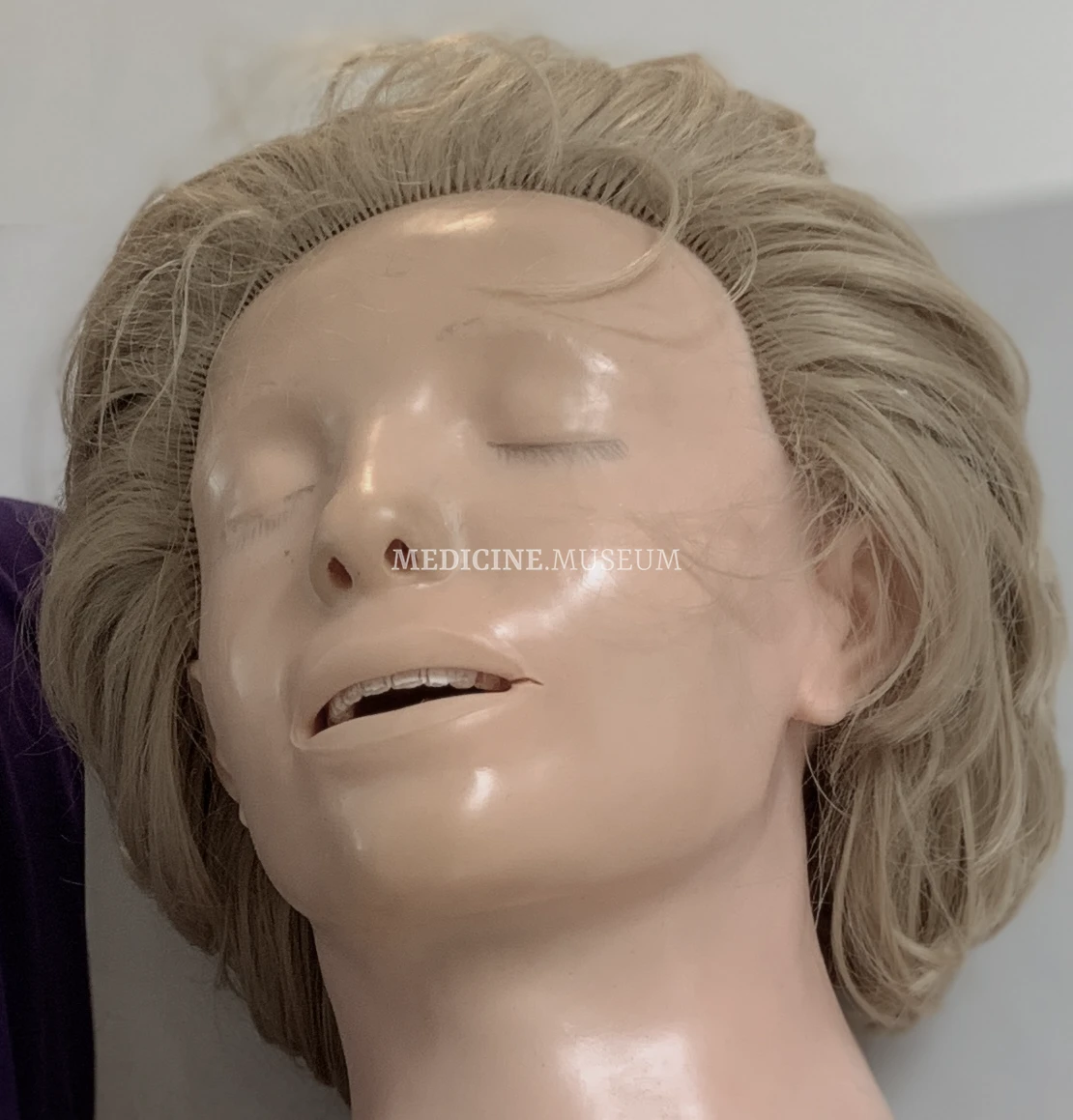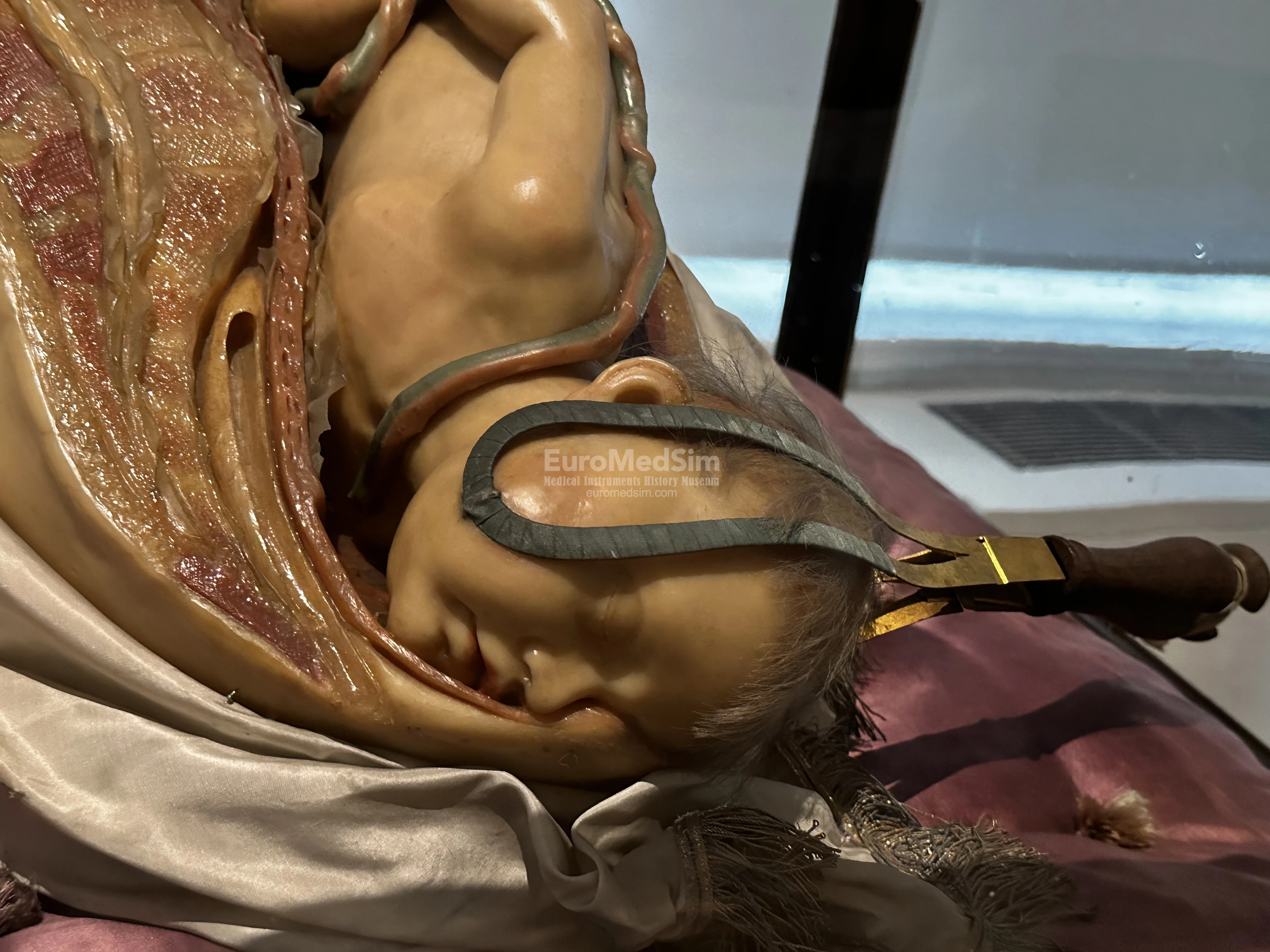Resusci Anne, cardio pulmonary resuscitation (CPR) training manikin
Object description
Resusci Anne, a globally known training manikin for the mouth-to-mouth respiration and chest compressions training. This Cardio-Pulmonary Resuscitation (CPR) educational tool was invented in the 1960s by Åsmund Lærdal, Norwegian entrepreneur. "Laerdal inflatable Resusci-Anne training manikin with inflator in carrying case, 1960-1985. This is a model which accurately simulates the human respiratory system for training purposes. This example trained drivers in the London Ambulance Service to provide Cardio Pulmonary Resuscitation (CPR). ‘Mouth to mouth’ respiration ensures oxygen reaches vital organs such as the brain when natural breathing has ceased due to a medical emergency. It involves breathing into a casualty’s mouth and administering chest compressions to stimulate heart beat. These manikins are used by emergency and non-emergency personnel on life saving courses." (quoted from the Science Museum page).
The Resusci Anne manikin is a full-length model of a female torso with a realistic head, blonde hair, movable neck and thorax designed to provide realistic feeling by the chest compressions. Skin of the manikin is made of soft PVC, realistic skin color. For greater realism, but also taking into account the issues of economy and ergonomics, the body of the manikin is designed as an inflatable tracksuit, which after use can be deflated and folded into a suitcase. As its sister product, Anatomic Anne, for the purposes of the storage and transportation it fits into a light green-grey suitcase with bright green stiffening ribs and protective corner-caps, and is equipped with two lockable latches.
Resusci Anne was created in the end of 1950s by Åsmund Lærdal, Norwegian entrepreneur, at that time a toy-maker. It was designed to the training of the 'mouth-to-mouth' method of artificial respiration without any or with very few technical devices as well as thorax compressions for indirect heart massage. The methodology of mouth-to-mouth breathing was offered by American anaesthesiologist, Peter Safar. Almost simultaneously with the proposed technique of resuscitation by mouth-to-mouth breathing, the effectiveness of indirect cardiac massage by rhythmic strong compressions in the region of the sternum was proved. The innovative Resusci Anne was presented by Laerdal in 1960. For many decades Resusci Anne became the gold standard device for the life saving courses world-wide.
Here is a citation from the "Manual for Operation and Maintenance" for this product:
Here is how Dr. Archer Gordon described the manikin when he has seen it in the first time in 1960: "Resusci-Anne was a lifelike, life-size manikin dressed in a blue ski outfit. Her face had the unblemished smoothness of a model, crowned with natural-looking honey-blond hair. Her features were tranquil and entrancing, with closed eyelids and a quiet yet enigmatic expression—a smile that was both sad and happy. When her neck was lifted and her head tilted backward into maximum extension, her lungs could be inflated through her mouth or nose. With each inflation, her chest would rise and fall. The rescuer could observe the chest movement, feel the lungs expand, and hear the air escape during exhalation, confirming that adequate ventilation was being achieved with each breath. If the head was not extended adequately, the airway became obstructed, just as in real life. The appearance and performance were near perfect." (quoted from “A Death Mask to Save Lives (The Story of Resusci-Anne)” by Archer S. Gordon, MD, PhD).
Reference object
A sister product Anatomic Anne, manikin made by Laerdal, Stavanger, Norway, ca. 1965-1980 from the EuroMedSim Museum of Medicine:
Remark
L'inconnue de la Seine
As a model for the face has been chosen the plaster mask of the Unknown from the Seine, very popular at that times. Here is how, in Dr. Gordon's words, Laerdal recounted in New-York in 1960 his decision: "In addition to the original criteria established for the training manikin, he added that it should be life-size, realistic in appearance, and aesthetically appealing. As the manikin evolved, he struggled to find a face that truly satisfied him. One day, while visiting his in-laws, he noticed a death mask of a young girl on the wall. He was immediately captivated by her mystical beauty. It struck him that this mask, taken from a person who died in her youth, would be ideal for teaching people how to save lives. This death mask was reputed to be the face of an unidentified young woman found drowned in the Seine River in Paris. There was no evidence of violence, leading some to assume that she had drowned herself. Her ethereal smile captivated viewers, inspiring many stories to explain the death of someone so young and beautiful. The circumstances surrounding her demise were never established, but some of these stories were published. This enigmatic mask thus became the face and personality of Resusci-Anne." (quoted from “A Death Mask to Save Lives (The Story of Resusci-Anne)” by Archer S. Gordon, MD, PhD). More about the story behind the mask can be found in the article L'inconnue de la Seine – a Prototype for Resusci Anne.
